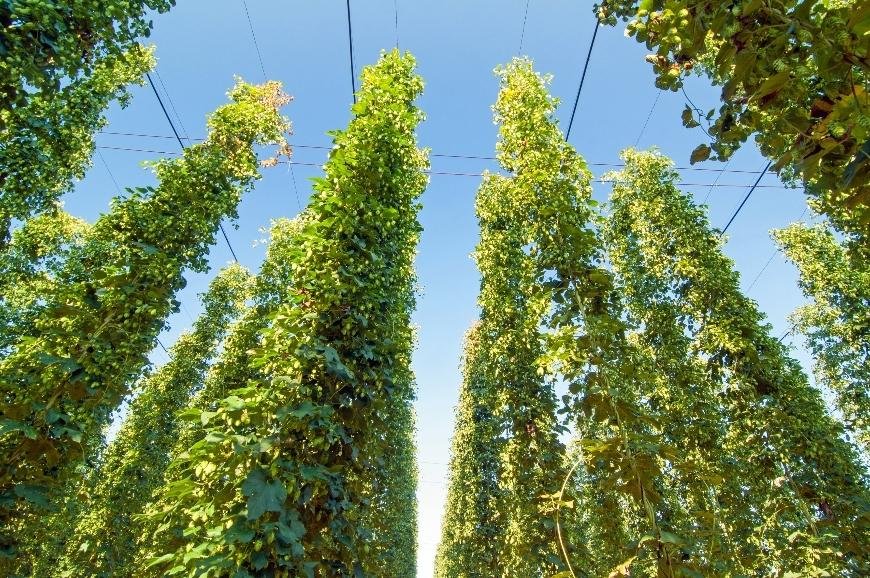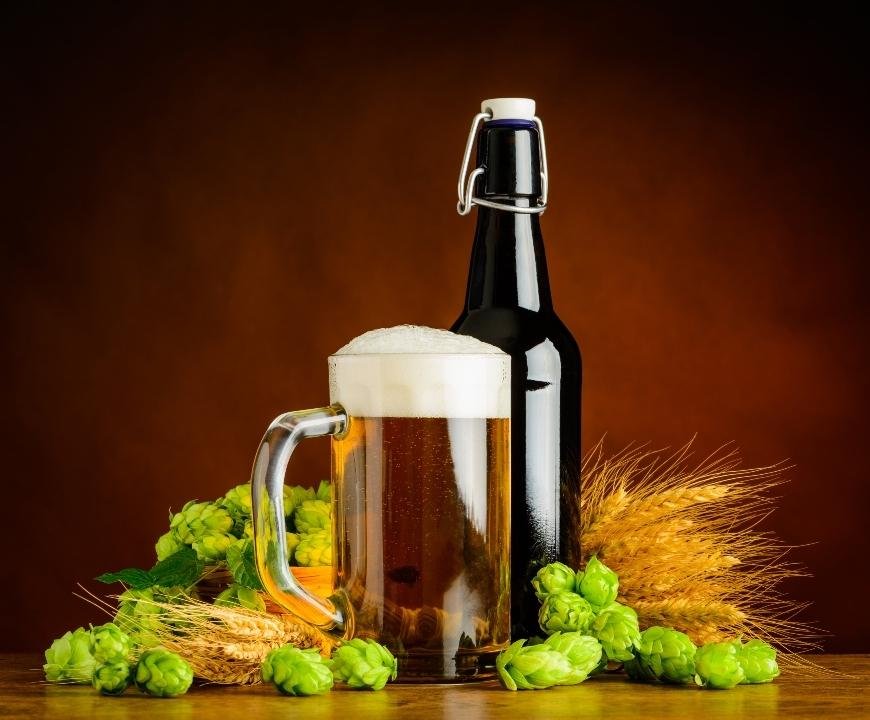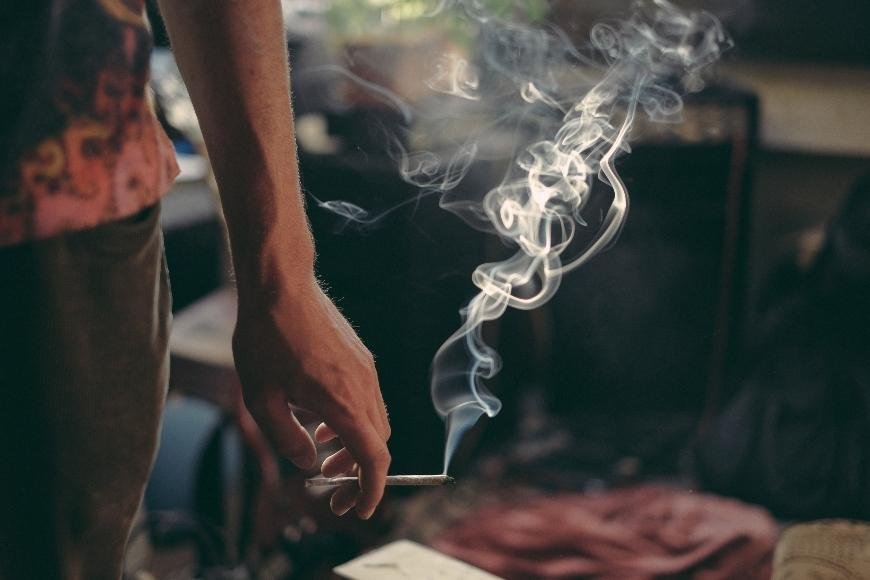How to Use Hops Flowers
Explore How to Use Hops Flowers for ingestion, smoking, brewing, and herbal medicine. Learn their benefits and safety considerations in this guide.

If you're curious about the various uses of hops flowers, then this blog post will provide an in-depth look into their many benefits and applications. Hops are renowned for their involvement in beer-making, but there are also many other ways to utilize and benefit from them that may be unknown.
In this blog post, we will explore various methods of preparing and using hops flowers – from ingestion to smoking and brewing. Additionally, we'll delve into the components found within these female flowers that contribute to their unique properties as herbal medicine.
As we navigate through the world of hops essential oils, bitter acids, and extracts, it's crucial to consider safety measures when taking hops or adding them into your daily routine. By understanding proper usage techniques and precautions associated with growing and utilizing this versatile plant, you can fully appreciate all that it has to offer while ensuring a safe experience.
So let's dive deeper into the fascinating realm of how to use hops flowers!
Table of Contents:
- Overview of Hops Flowers
- Preparation of Hops Flowers
- Ingesting Hops Flowers
- Smoking Hops Flowers
- Brewing with Hops Flowers
- Safety Considerations when Using Hops Flowers
- Frequently Asked Questions How to Use Hops Flowers
- Conclusion
1. Overview of Hops Flowers

Hops flowers, scientifically known as Humulus lupulus, are cone-shaped flowers that grow on the female hops plant. Hops flowers, scientifically known as Humulus lupulus, have long been utilized for their bitterness and aroma in beer brewing; additionally, they contain various medicinal properties and can be used recreationally to induce a calming effect. However, they also possess a range of medicinal properties and can be consumed recreationally for their calming effects.
The active compounds found within hops flowers include essential oils, bitter acids like humulone and lupulone, as well as flavonoids such as xanthohumol. These substances contribute to the plant's sedative qualities and potential health benefits like reducing inflammation and promoting relaxation (source). For those interested in exploring alternative ways to unwind or enhance their homebrewing experience, learning how to use hops flowers can open up new possibilities.
Hops flowers can be a great addition to many dishes, and understanding the basics of how they are grown and prepared is essential for getting the most out of them. Let's explore the best methods for utilizing hops flowers in order to get maximum flavor.
2. Preparation of Hops Flowers
Before diving into the various methods of using hops flowers, it's essential to know how to prepare them properly. Preparing hops flowers involves cleaning, drying, and storing them in a way that preserves their potency and flavor. Follow these simple steps:
- Cleaning: Start by gently rinsing your freshly harvested hops flowers under cold water to remove any dirt or debris.
- Drying: Lay the clean hops flowers out on a flat surface covered with paper towels or a clean cloth in a well-ventilated area away from direct sunlight. Allow them to air dry for several days until they feel papery and brittle when touched.
- Storing: Once dried, store your prepared hops flowers in an airtight container such as a glass jar or ziplock bag. Store the airtight container in a cool, dim area like a larder or cupboard for optimum preservation.
The preparation process is crucial because it ensures that your chosen method of ingestion will be effective while minimizing potential risks associated with consuming contaminated plant material. Now that we've covered preparing your own supply let's explore different ways of ingesting these fragrant blossoms.
3. Ingesting Hops Flowers
To ensure the best experience, it is important to understand how each method of ingesting hops flowers affects your body and mind. It is critical to comprehend the disparities between each approach in order to gain a distinctive experience.
a) Tea Infusion
Making a tea infusion with hops flowers is an excellent way to enjoy their calming effects without inhaling smoke or vapor. The process is simple: just steep dried hops flowers in hot water for about 10 minutes, then strain and enjoy. You can also add other herbs like chamomile or lemon balm for added flavor and relaxation benefits.
- Effects: Calming, soothing effect; ideal for stress relief and sleep aid
- Taste: Earthy, slightly bitter taste that can be enhanced with additional herbs
b) Vaporizing (Vaping)
Vaporizing or vaping hops flowers allows you to experience their relaxing properties quickly without combustion byproducts associated with smoking. To vape hops flowers effectively, use a dry herb vaporizer designed specifically for botanicals like cannabis or other herbal blends.
- Select a high-quality dry herb vaporizer;
- Add finely ground dried hops flowers into the chamber;
- Select an appropriate temperature setting (usually between 175°C-200°C);
- Inhale slowly through the mouthpiece as vapors are produced;
- Savor the flavors while enjoying its calming effects.
c) Tinctures
Hops flower tinctures are concentrated liquid extracts that can be taken sublingually (under the tongue) or added to food and beverages for easy consumption. Making your own tincture is relatively simple, requiring only dried hops flowers, high-proof alcohol like vodka or Everclear, and time for the mixture to infuse.
- Effects: Potent calming effects; may provide stress relief and sleep aid
- Taste: Strong herbal flavor with an alcoholic bite
d) Edibles
Incorporating hops flowers into edibles is another creative way to enjoy their relaxing properties. Hops-infused honey, butter, or oil can be used in various recipes ranging from sweet treats like cookies to savory dishes like pasta sauces.
- Select a recipe that calls for honey, butter, or oil as an ingredient
- Create an infusion by gently heating the chosen ingredient with dried hops flowers on low heat for 30-60 minutes
- Strain out the plant material before incorporating it into your recipe; Find inspiration for cooking with hops flowers here.
Ingesting hops flowers can be a great way to experience the full range of benefits that this plant has to offer. However, it is important to note that smoking hops flowers also provides its own unique set of effects and potential health risks.
4. Smoking Hops Flowers

If you're looking for a more immediate and potent effect from hops flowers, smoking them might be the method for you. In this section, we'll provide step-by-step instructions on how to smoke hops flowers safely and effectively.
A. Gathering Your Materials
To get started with smoking hops flowers, you'll need the following items:
B. Preparing Your Hops Flowers for Smoking
Before smoking your dried hops flowers, it's essential to break them down into smaller pieces that will burn evenly when smoked. To do this:
- Take your dried hops flower buds and remove any stems.
- Use a grinder or scissors to finely chop the buds, making sure they are not too dense but also not too powdery.
C. Rolling A Joint Or Packing A Pipe/Bowl With Hops Flowers
- If using papers: Roll your ground-up hops in rolling paper as if rolling a cigarette - make sure it is packed tightly enough so that it burns smoothly but not so tight that air cannot pass through.
- If using a pipe/bowl: Pack the ground-up hop flower mixture into the bowl of your pipe without packing it too densely; leave some room for air to flow through the pipe when you inhale.
D. Lighting And Smoking Your Hops Flowers
Now that your hops flowers are prepared and packed, it's time to light up:
- Hold a lighter or match flame at the end of your joint or near the bowl of your pipe while gently inhaling - this will draw the heat into the hops flower mixture and ignite it.
- Inhale slowly and deeply, allowing smoke from burning hops flowers to fill your lungs before exhaling.
- Take breaks between puffs as needed; smoking too quickly can lead to coughing fits or an overly intense experience.
Note: If you're new to smoking herbs like hops flowers, start with small amounts and work your way up as you become more comfortable with its effects. As always, use caution when experimenting with any new substance - especially if combining it with other substances such as cannabis or tobacco.
Smoking hops flowers is an increasingly popular way to enjoy the relaxing effects of this plant, but it's important to remember that they can also be used in brewing. Brewing with hops flowers offers a unique and flavorful twist on traditional beer recipes.
5. Brewing with Hops Flowers
If you're a fan of craft beer, you've probably heard about hops flowers and their role in the brewing process. Have you ever considered using these botanical wonders to make your own original beer concoctions? In this section, we'll explore how to incorporate hops flowers into your homemade beer recipes for an unforgettable flavor experience.
A. Choosing the Right Hops Flowers
Before diving into the brewing process, it's essential to select the right variety of hops flowers. Different types will impart distinct flavors and aromas to your final product, so choose wisely based on your desired outcome:
- Bittering Hops: These varieties are high in alpha acids and provide bitterness to balance out sweet malt flavors.
- Aroma Hops: Lower in alpha acids but rich in aromatic oils, aroma hops contribute complex scents and tastes without adding much bitterness.
- Dual-Purpose Hops: As the name suggests, dual-purpose varieties offer both bittering and aroma properties for a well-rounded brew.
B. Preparing Your Ingredients
To get started with brewing using hops flowers, gather all necessary ingredients including water, malt extract or grains (depending on whether you're making an extract or all-grain batch), yeast, and of course - freshly dried whole-leaf or pelletized hop cones. You may also need additional equipment such as a kettle large enough for boiling wort (unfermented beer) along with fermentation vessels like carboys or buckets.
C. The Brewing Process
Now that you have everything in place, it's time to begin the brewing process:
- Mashing (All-Grain Only): Heat your water and mix with crushed grains to create a mash. Maintain a consistent temperature for about an hour before separating the liquid wort from spent grain using lautering or sparging techniques.
- Boiling: Bring your wort to a rolling boil and add hops flowers according to your recipe's schedule. Bittering hops are typically added early in the boil while aroma varieties are introduced later on for optimal flavor extraction.
- Cooling & Fermentation: Once boiling is complete, rapidly cool down your wort using an immersion chiller or ice bath before transferring it into a sanitized fermentation vessel. Pitch yeast and seal with an airlock, allowing fermentation to occur over several days or weeks depending on factors like temperature and yeast strain.
- Bottling & Conditioning: After primary fermentation has finished, transfer beer into bottles primed with sugar for carbonation purposes. Seal tightly and allow bottles to condition at room temperature until desired level of carbonation is achieved - usually around two weeks.
Brewing beer with hops flowers can be both rewarding and fun as you experiment with different varieties, recipes, and techniques. By following these steps carefully along with any specific instructions provided by your chosen recipe source such as homebrew books or online forums like HomeBrewTalk, you'll soon be enjoying delicious homemade brews infused with unique hop flavors.
6. Safety Considerations when Using Hops Flowers
While hops flowers are generally considered safe for consumption, it's essential to be aware of potential risks and safety considerations associated with their use. By understanding these factors, you can minimize any adverse effects and enjoy the benefits of this versatile plant.
Potential Allergic Reactions
Some individuals may experience allergic reactions to hops flowers or their components, such as bitter acids and essential oils. Symptoms of an allergic reaction may range from skin rashes and itching to sneezing or difficulty breathing. If you suspect an allergy to hops flowers or have a history of allergies to other plants in the same family (Cannabaceae), consult your healthcare provider before using them.
Pregnancy and Breastfeeding Concerns
Hops flowers should be avoided during pregnancy due to their potential estrogenic effects. It is prudent to abstain from taking hops supplements while breastfeeding, as there is limited evidence on its safety.
Tips for Safe Consumption:
- Start with a low dose: When trying any new herbal medicine like hops extracts or supplements for the first time, begin with a small amount to gauge your body's reaction.
- Avoid mixing substances: Combining different substances can lead to unpredictable results. Refrain from taking multiple drugs simultaneously when adding hops into your routine.
- Known interactions: Be aware that certain medications might interact negatively with hop components; consult your healthcare provider if you're currently taking prescription medication before using hops flowers.
- Quality matters: When purchasing hops products, opt for reputable brands and sources to ensure you're getting high-quality ingredients free from contaminants or adulterants.
Incorporating hops flowers into your life can provide a range of benefits, from relaxation to enhancing the flavor profile of your homebrewed beer. By understanding the potential risks and safety considerations associated with their use, you can enjoy this versatile plant responsibly. Remember always to consult a healthcare professional if you have any concerns about using hops flowers or other herbal remedies.
Frequently Asked Questions How to Use Hops Flowers
How do you use hops flowers?
Hops flowers can be used in various ways, including ingestion as a tea or supplement, smoking for relaxation purposes, and brewing in beer. Each method requires different preparation techniques to ensure the best experience and results.
What are the health benefits of hops flower?
Hops flowers have several potential health benefits such as promoting relaxation, aiding sleep, reducing inflammation, and providing antibacterial properties. They contain compounds like flavonoids and essential oils that contribute to these effects. However, more research is needed to confirm their full range of benefits.
What can I do with dried hops flowers?
Dried hops flowers can be used for making herbal teas or tinctures, added to homemade skincare products like soaps or lotions for their soothing properties or incorporated into potpourri mixes for their pleasant aroma. Additionally, they can be smoked or brewed in beer recipes.
What is hops flower extract used for?
Hops flower extract is typically utilized as a natural remedy for anxiety relief and insomnia due to its calming effects. It's also commonly found in dietary supplements aimed at supporting hormonal balance during menopause. Furthermore, it's sometimes included in skin care products thanks to its anti-inflammatory properties.
Conclusion
Using hops flowers can be a great way to explore the world of herbal remedies. Whether you choose to ingest, smoke or brew with them, understanding how each method works and being aware of safety considerations will ensure that your experience is enjoyable and beneficial. With some experimentation and knowledge about this plant, you can make use of its many benefits in an informed manner.






































































































































